VVAM Newsletter 87 – 2002
FRIENDS OF THE AIRBORNE MUSEUM
Editors:
Drs. R.P.G.A. Voskuil
C. van Roekel
G.H. Maassen jr.
Newsletter No. 87, August 2002
Translated by Cathrien and Peter Clark
Excursion to Nijmegen and Driel
As already mentioned in Newsletter No. 85, the Society of Friends is organising a bus excursion on 12 October next, the subject being: ‘The allied advance from Nijmegen to Driel and the battle of the Polish Parachute Brigade’. The excursion will be led by Marcel Anker, Geert Maassen, Peter Vrolijk and Luuk Buist.
The programme is as follows:
09.00 hrs: Departure of the bus from the Goede Herderkerk car park in Oosterbeek (corner of J.J. Talsmalaan/Utrechtseweg).
09.30 hrs: Visit to the ‘Jonkerbos’ cemetery at Groesbeek, followed by visits to the 64th Medium Regiment, Royal Artillery positions and the crossing point of 3rd Battalion, 504th Regiment, 82nd Airborne Division near the power station, both in Nijmegen. The capture of the railway bridge and road bridge and the advance of 43rd Wessex Division through the Betuwe will then be highlighted.
12.00-13.00 hrs: LUNCH at Valburg.
13.00 hrs: Continuation along the advance route to Driel. Visit to the Polish Parachute Brigade dropping zone and explanation of the fighting in and around Driel village.
17.00 hrs: Arrival back in Oosterbeek.
The cost of the excursion is € 35 per person. This covers the bus journey, the lunch and the excursion guide. Payment must be received by 28 September at the latest.
Applications will be dealt with in order of receipt and a maximum of 45 seats is available. In the event of over-subscription you will be notified only if you CANNOT make the trip.
Contact Eugene Wijnhoud, telephone 026 3513100, e-mail e.wijnhoud@12move.nl if you have any questions about the excursion.
Obituary: Dennis Munford
Dennis Munford passed away on 27 February 2002 at the age of 89. In September 1944 Major Dennis Munford was ‘Battery Commander’ of No. 3 Battery, Airlanding Light Battery, Royal Artillery. He managed to reach the Rhine Bridge in Arnhem during the evening of the 17th. From there he directed the fire of his unit’s guns (howitzers) by radio over the next few days. The guns were located near the Old Church in Oosterbeek.
Peter Wilkinson, ‘Command Post Officer’ of
No. 3 Battery in September 1944, presented a number of Dennis Munford’s personal possessions to the Airborne Museum on 31 March this year.
31 March 2002. Peter Wilkinson (left) hands over a number of Dennis Munford’s personal possessions to Airborne Museum director Mr W. Boersma. Dennis Munford died on 27 February this year.
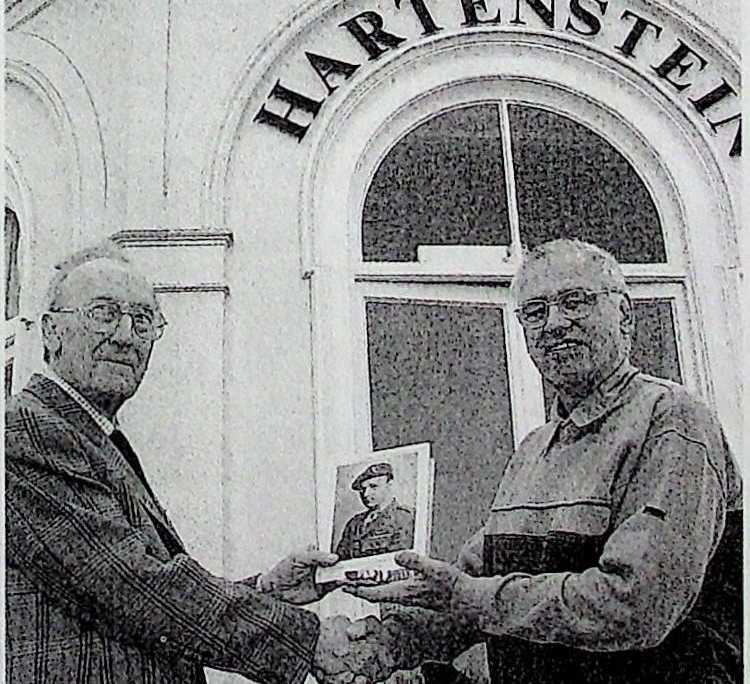 (photo: Berry de Reus)
(photo: Berry de Reus)
‘Theirs is the Glory’ video
After being sold out for a number of years, the video of the British film ‘Theirs is the Glory’ has recently become available again in the Airborne Museum. The film, a large part of which was shot in the ruins of Arnhem and Oosterbeek in 1945, is a ‘reconstruction’ of the Battle of Arnhem.
750 Copies of this release have been produced, each contained in a box with a very distinctive cover. It is for sale only in the Airborne Museum, Oosterbeek. The video runs for 82 minutes and costs € 27.
Medal display cabinet
Very shortly after the opening of the Airborne Museum in Hartenstein on 11 May 1978, many veterans expressed the wish that their medals might possibly be displayed. This wish was supported by General Urquhart during the 1984 commemoration with a call to the veterans to bequeath their decorations to the museum. Over the years the ‘Hartenstein’ has received more than sixty medal sets.
Last winter Roland Boekhorst of the maintenance staff and volunteer Dick Knoop stored all the known details of these medal sets and their owners in a computer. In the future visitors will be able to access for themselves the information stored in the computer. A test set-up will be placed in the ‘big hall’ next to the medal display cabinets this summer. It will contain a selection of the stored information. Various other details will be developed further over the coming period.
Help is needed for looking up the details, their inputting and the formulation of the text. Volunteers who would like to work on this project can obtain more information from W. Boersma, per e-mail w.boersma@wxs.nl or via the Airborne Museum (026 3337710).
Lectures on 8 September
On 8 September next, our representative in Britain Niall Cherry will be giving three short lectures at the Schoonoord restaurant in Oosterbeek. The subjects will be
1) ‘The defence of the Van Limburg Stirumschool on the east side of the Rhine Bridge in Arnhem ,
2) ‘Leo Hall, gunner at the bridge’,
3) ‘Dr. Lipmann Kessel and his escape from Apeldoorn’.
This series of informal talks will be in English, will begin at 14.00 hrs and will last approximately two hours. At the end of the lectures Niall will answer questions from the floor.
If you plan to attend the lectures you are kindly asked to contact Eugene Wijnhoud, telephone 026 3513100, e-mail: e.wiinhoud@12move.nl
Volunteers wanted
The Airborne Museum and the Society of Friends co¬operate closely in the organising of sales stands at various events. Volunteers are needed for the manning of these stands. The next event at which we shall be present is the Airborne Walk on 7 September next. If you are interested in helping would you please contact W. Boersma at the Airborne Museum (026 3337710) or by e-mail: w.boersma@wxs.nl
Appeal
The previous Newsletter contained a photograph of the interrogation of Dave Morris in front of a villa whose location is not yet known. Unfortunately the printer cut off the top of the picture which showed the half-round window above the door. Since this is an essential detail, and up to now reactions to the appeal have failed to throw any light on the location,the picture appears again in this Newsletter together with another of which we would also like topographical details. It is even possible that both photos were taken outside the same building. Anyone who can help in solving this riddle can contact Geert Maassen, Renkum Municipal Archive, Postbus 9100, 6860 HA Oosterbeek, tel. 026 3348303, e-mail gmaassen@renkum.nl.
Airborne Museum website
There is great interest in the Airborne Museum website, www.airbornemuseum.com. with an average of 3,500 hits being registered each month. The site is regularly added to and maintained by webmasters B. de Reus and P. Klaassen. Much attention is paid to updating, enabling photos of activities and visits to be included at short notice. The sale of articles via the website, particularly books, appears to be a great success. Expansion of the selection is under preparation.
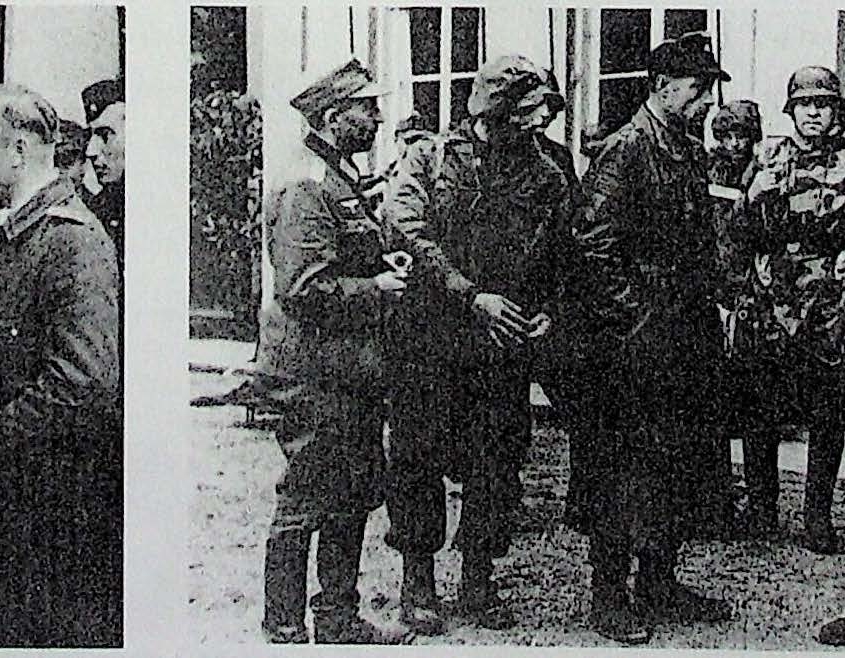
Left photo: Dave Morris being questioned by a German at the entrance to a villa. Right photo: Polish Lieutenant-Colonel Marcin Rotter, who was captured at Oosterbeek, talking to a number of German soldiers. Is this in front of the same premises where Dave Morris was photographed?
(photos: R. Voskuil collection)
Another view of the Battle of Arnhem
Some time ago a book by Society member Peter Berends was published showing the Battle of Arnhem from the German standpoint. In various earlier publications we come across reports, short and long, by German or Dutch servicemen who were involved in the battle. These constitute the author’s principal source of information. The details in the reports are used in the book and accepted as being reliable without any criticism or comment. Use is also made of fairly generally known accounts. The majority was written by Germans during or shortly after the war. The interpretation of, mainly, German photos is also used as a source.
Not many new facts come to light. However, the battle as seen from the German viewpoint is clearly described. Throughout the book we are shown that our eastern neighbours fought fiercely, something that is underplayed in many other publications. For example, the description of the fighting around St. Elisabeth Hospital on 18 and 19 September 1944 clarifies a number of events.
Alas we find a number of historical errors in the book that could easily have been avoided, some of which are now mentioned.
The indication of the dropping and landing zones on the maps is not entirely correct and, in part, wrongly mentioned in the text: pages 80 and 126.
No such unit as an Airlanding Anti-tank Battalion, Royal Engineers existed: page 151.
There are more similar, easily avoidable errors to be found. The wide use of German terms, or translations that are ‘germanisms’, are intended to create a German atmosphere, but they actually disrupt the text. What are we supposed to make of a ‘self-propelling platform’ for instance?
A number of passages are repeated in virtually identical wording: e.g. that British snipers accounted for most of the German dead. That the British shot at German medical corps soldiers. And that German POW’s had to use spoons to dig trenches for their protection – as stated by the author – is nowhere supported by documentation.
The German, British and Dutch ranks are mixed up with one another in an odd way. ‘Colonel’ is translated as ‘Oberstleutnant’ and ‘Lieutenant- Colonel’ as ‘Generalleutnant’, and that creates a strange impression.
It would have benefited the book if a military- minded person had read it through and fished out these errors. Hopefully the text will be viewed more critically in the event of a reprint.
Despite the mistakes it is an interesting book that, more than 57 years after the event, highlights the other, often overlooked side of the Battle. It is certainly worth buying and it makes an interesting read.
Peter Berends, ‘Een andere kijk op de slag om Arnhem: De snelle Duitse reactie’ (Another view of the Battle of Arnhem: the rapid German reaction), Publisher: Aspect (Soesterberg) 2002, (ISBN 90-5911- 008-0), contains 382 pages, and is illustrated with photos and maps. It costs € 26,98.
(W. Boersma)
Burma or Arnhem?
Society member Philip Reinders from the ‘Arnhem Battle Research Group’ sent us the following story about the remarkable result of archive research.
‘Some time ago, while delving into the Arnhem municipal archives, I came across a letter dated 21 November 1945. It was written to the burgomaster by a Mrs E. Robinson from Birkenhead in the UK. In the letter she requested information about her missing son Richard Lawrence Robinson (army number R/81094), Driver with No. 1 Parachute Platoon, 250 Airborne Light Company. Mrs Robinson knew that her son had landed at Arnhem on
17 September 1944 and was reported as missing from the 25th.
In the first place, the name didn’t ring a bell with me, and neither could I find any reference to it in the Roll of Honour. This could mean one of two things: either he had not been at Arnhem or he had not been registered as missing in the Battle. Consulting the Commonwealth War Graves Commission website revealed that he had been reported as missing since 26 September 1944, but in Burma! His name was given on the Rangoon Memorial in Myanmar, the present-day name of Burma. Myanmar is in S.E. Asia, so it was clear that somewhere a mistake had been made.
Arnhem council replied to Mrs Robinson on 10 January 1946 saying that her son was not buried in the Airborne Cemetery in Oosterbeek, but probably at Groesbeek. Why this was said is not clear.
After consulting Geert Maassen I sent the above information to Jan Hey in Hengelo, asking if lie could do anything with it. He was also of the opinion that an error had occurred and he contacted the British authorities. In the meantime 1 had found a copy of an official document in my own archive dating from just after the Battle of Arnhem, stating that Driver Robinson was reported missing during the battle.
On 19 January 2002 a message from Jan Hey told me that the British authorities had discovered a mistake, and that Richard Robinson had been killed during the Battle of Arnhem.
He will be included in the next edition of the Roll of Honour with the notification ‘No known grave.’
Exhibition in the Town Hall
Two members of the Friends’ Society, Luuk Buist and Philip Reinders, in conjunction with municipal archivist Geert Maassen, are involved in the preparation of an exhibition to be held in Oosterbeek Town Hall. The title of the exhibition will be ‘Wings, by air to Arnhem’, and is about the glider flights, re-supply flights and aircraft crashes during the Battle of Arnhem. The compilers have gathered together a lot of information on the subject, such as documents, photographs as well as excavated artefacts.
The exhibition will run from 5 September until 10 October 2002 inclusive.
De Tafelberg
Over the past few weeks the premises at Pietersbergseweg 46 in Oosterbeek, better known as Huize de Tafelberg, has been much in the Renkum news. The part of the main building that has received monument status (the most northerly portion with the characteristic facade) still stands, but the rest has been demolished (see photo).
Of course the fact that De Tafelberg Hotel was used as an emergency hospital in September 1944 has been regularly reported in the newspapers. And this role in the history of Renkum municipality is the main reason why the burgomaster and aidermen, in joint consultation with the Friends, decided to protect a distinctive part of the building and have it placed on the municipal monument list.
The media also reminds us that many wounded were treated in the building during the Battle of Arnhem. And that numerous helping hands, both (initially) civilians and (later) soldiers, carried out useful and rewarding work at that time.
But it is often overlooked that it was not only soldiers who lost their lives; Oosterbeek townsfolk also died. One such was Agnes Elisabeth (Bijtje) van der Veen, who died of her wounds on 21 September 1944, just 16 years old. Another was Cornelia Maria Aleida (Corrie) Roessingh who helped tend the wounded soldiers, and died four days later at the age of 28 when the building was hit by a shell.
Tafelberg’s main function was not as a British emergency hospital. The municipal council had nominated the hotel as a hospital for the inhabitants of Oosterbeek in time of need. It was in this capacity that the building was taken over by a team led by CP Doctor G.H.O. van Maanen on the first day of operation Market Garden. Later (on Monday evening), the British doctor Colonel Graeme Warrack (Royal Army Medical Corps) arrived at De Tafelberg and asked if his men might be permitted to make use of the building. This was allowed, and so the Oosterbeek emergency hospital received its allied guests.
With thanks to Mrs Annie Pelster (nee Caspers) for the historical facts she provided based on her own experiences as an emergency aid at De Tafelberg. (Geert Maassen)
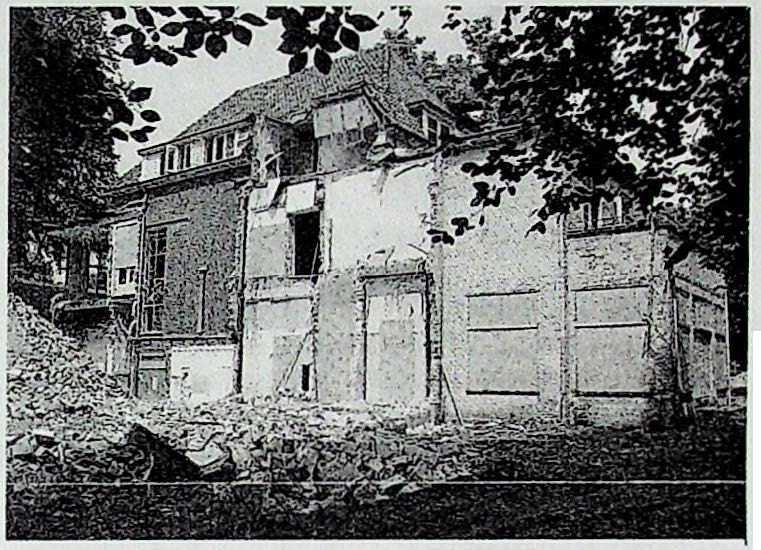 5 June 2002. Demolition crews have been busy knocking down Huize Tafelberg. Only the front part will remain, having been given monument status.
5 June 2002. Demolition crews have been busy knocking down Huize Tafelberg. Only the front part will remain, having been given monument status.
(photo: Berry de Reus)
Request for assistance
We have received the following call from member Arie-Jan Van Flees.
Tn 2004 I hope to publish a book describing the ‘air aspects’ of the re-supply drops by the RAF at Arnhem. From the more than 600 sorties flown, 91 aircraft failed to return to their home bases in England. The book will describe all the sorties, per day, per airfield and per squadron. At the same time the crashes, premature landings and emergency landings of the aircraft involved will be covered in depth. The fate of the crewmembers, aircrew as well as RASC Despatchers, will also be dealt with.
The supply of information from ‘Brabant sources’ is considerable, but I could still use some extra help from the province of Gelderland.
Anyone with relevant information and who would like to assist on this publication can contact Arie-Jan van Hees, Courtpendu 7, 6245 PE Eijsden, telephone 043 4092279, e-mail: ajvhees@worldonline.nl.
Finally, it should also be mentioned that De
Thanking you in anticipation!’

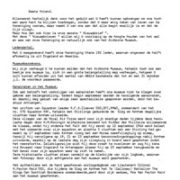
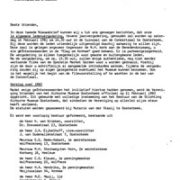
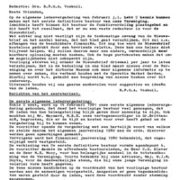
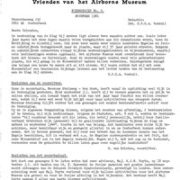
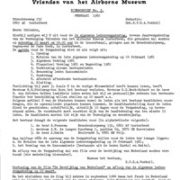
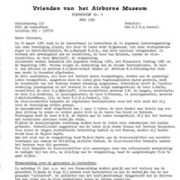
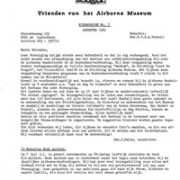
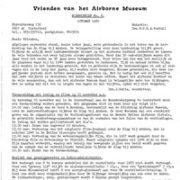
Plaats een Reactie
Vraag of reactie?Laat hier uw reactie achter.